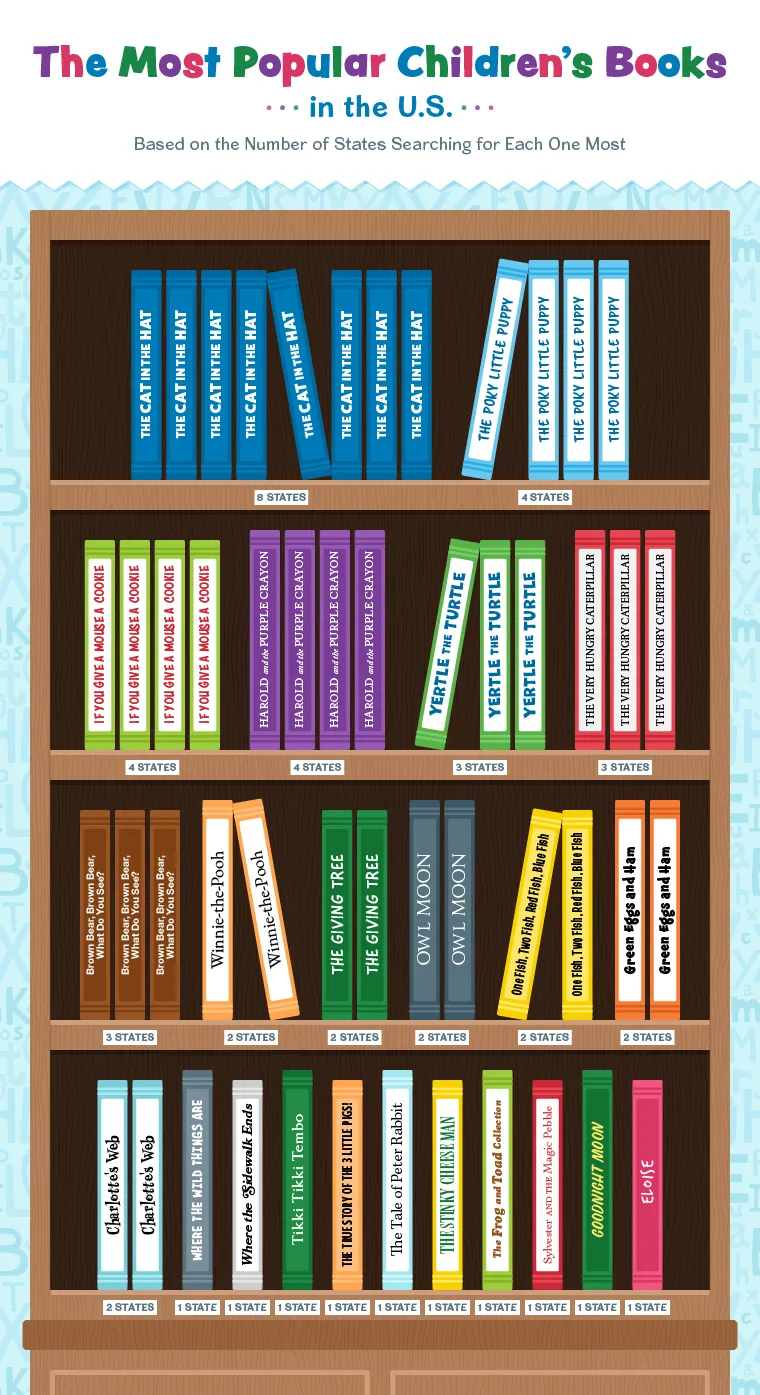
What Are The Most Popular Children’s Books in Each State?
In honor of Read Across America Day, March 2, Grand Canyon University looked into the data about the most popular children’s books in each state. The team used Time’s 100 Most Popular Children’s Books of All Time and Publisher’s Weekly’s All-Time Bestselling Children’s Books as their resources to begin the research. From those resources, the team used Google Trends data between November 2020 and November 2021 to identify the books with enough search traffic to merit deeper exploration — that resulted in 44 titles. From there, the Trends were examined by state.
The goal of the study was to highlight the importance of reading from a young age. It bears mentioning that another goal was selling programs at the private, for-profit Christian university.
Before showcasing the team’s findings and their neat-looking graphics, a note on methodology. This data does not take into account the fact Dr. Seuss books trended for over a month, following the estate’s decision in March 2021 to discontinue publishing a select number of titles depicting racist images. Many Seuss books returned to the bestseller list and became subject to valorization, particularly by right-wing groups decrying the ending of their publication as censorship (something those same groups don’t see as a problem now in demanding books be removed in schools and libraries).
Further, there is not a single book by an author of color on any of these lists. Because the researchers used a non-standard method of “if it produced enough search traffic” to identify titles to explore by state in Google Trends, it inevitable meant older books would appear more frequently, and has been pointed out repeatedly, those books tend to be by straight, white (often male) authors.
That said, here are the books they found to be the most popular in each US state:

Out of the 44 books the team identified as ones to investigate, 23 appeared as the most popular in at least one state. In the US South, Dr. Seuss was a favorite, while Eric Carle books were popular in the West, and Winnie the Pooh in the Northeast.
The team looked at a second measure as well: the most popular children’s books in the US overall.

Again, not a single book by an author of color is included. But there is one book featuring racist stereotypes. Dr. Seuss, of course, remains most popular.
Oddly, the researchers noted they did not include books for older children like Harry Potter and yet, they did include Charlotte’s Web, which falls into the same age range as the wizard school series.
Obviously, older titles have more popularity, as they’ve had a longer time to be passed down among generations of readers. But this study doesn’t really say much other than people Googled Dr. Seuss quite a bit. It’s not indicative of much more than that, nor does it offer insight into the importance of reading from a young age. Instead, it showcases how some books can become Google popular when they hit the news. It also emphasizes how white the children’s book canon is and how important continuing to publish, promote, and celebrate books by authors of color, featuring characters who range in background and gender, to disengage white nostalgia of adults from the needs of today’s youngest readers.
Would we see a book like It’s Perfectly Normal or Jack (Not Jackie), both titles published for this same age group, show up on such a list next year, given how much they’ve been in the collection of titles actually being censored in the last year? We’ll have to wait and see.









